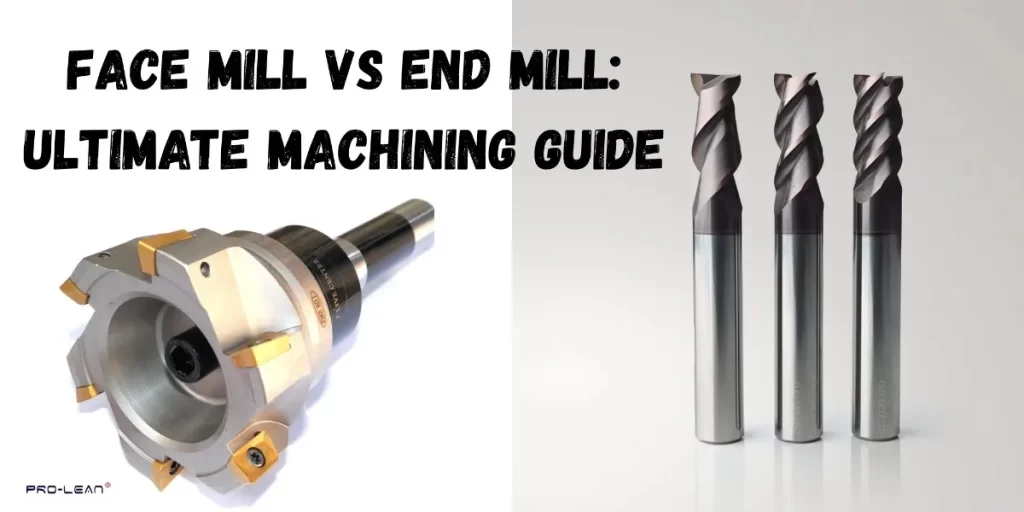
Face Mill vs. End Mill Guide
Confused about choosing between face mills and end mills for your machining needs?
Face milling smoothly lubricates large surfaces, which is crucial for flat planes in engine blocks and molds. Conversely, the end milling excels in creating important shapes, grooves, and detailed aerospace and medical parts features.
At ProleanTech, we use both to deliver accurate components, which helps manufacturers to adapt to quality. This guide explores the differences and applications, ensuring you select the ideal equipment for enhanced production.
Let’s find out which mill is best for your project!
What is Face Milling?
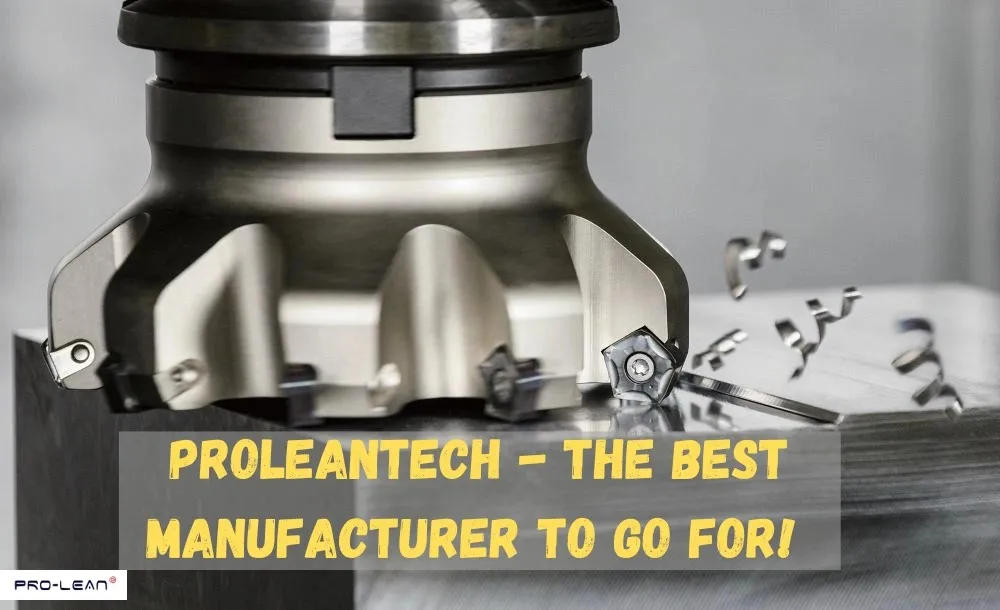
Face milling is a smart way to make the material’s surface flat and smooth using a special spinning tool. This tool has several sharp edges that cut away the material as it moves across the surface.
This process includes a wide cutting tool with many teeth that smooths a large area. The tool’s cutting parts can be changed, so you don’t need to replace the whole tool after they get worn out. Face milling is an excellent choice for making things from metal and plastic, and it quickly removes materials and creates a small piece of waste.
What is Face Mill used for? Modern face milling tools are good at quickly making exact flat surfaces. You often see face milling used to make things like engine blocks, the bases for molds, and structural parts where having a perfect flat surface is essential.
Check and See How CNC Milling Delivers Precision for Every Material.
What is End Milling?
What is End Milling?
A drill bit that can cut sideways is called an end mill. It is a round tool with sharp edges that can cut in two ways: along its sides (like shaving) and its end (like drilling). The sharp edges of the end are called flutes and twist like a corkscrew. This twist makes cutting smoother and less bumpy each time a cutting edge touches the material.
End mill machining is used to make holes in material, and few are designed to cut straight down, which can create holes. Meanwhile, if you want some accurately sized holes, go for a drill bit first to make an initial hole and then a reamer for the exact size and smoothness. What end mills do is:
- Making Grooves
- Hollow Areas
- Holes
- All sorts of curvy edges
The end mill process is also used for making jewelleryjewelry, molds, and various parts of machines. These spinning tools are often used with computers (Custom CNC Milling) to create shapes automatically.
What is the Difference Between Face Milling and End Milling?
Face milling uses a wide cutter to smooth large, flat surfaces quickly. End milling uses a more versatile, smaller cutter to create shapes, slots, and detailed features by cutting with its sides and end.
Here is a comparison table considering several features:
| Feature | Face Milling | End Milling |
| Cutting Action | Primarily axial | Radial and axial |
| Surface Finish | Superior flatness | Good but less uniform |
| Material Removal | High rates possible | More controlled removal |
| Tool Cost | Higher initial investment | More affordable options |
| Applications | Large flat surfaces | Complex geometries |
Types of Face Milling Cutters
Several cutting tools work best for making smooth and flat surfaces, depending on what you need to do. Here are some common face milling cutter types that you can choose:
- End Mills: End mills are excellent tools that make smooth surfaces and cut out shapes. They’re used for cutting around the edges and making smooth, flat surfaces.
- Shell Mills: Shell mills are big cutters only used when you need to quickly remove a lot of material to get a flat surface. Shell mills are stronger and work well on significant parts. They instantly get the surface ready for a smoother finish.
- Fly Cutters: This tool comes with only one cutting edge. It works more slowly but makes smooth surfaces for smaller parts. A fly cutter works best for an even finish and can work on different materials.
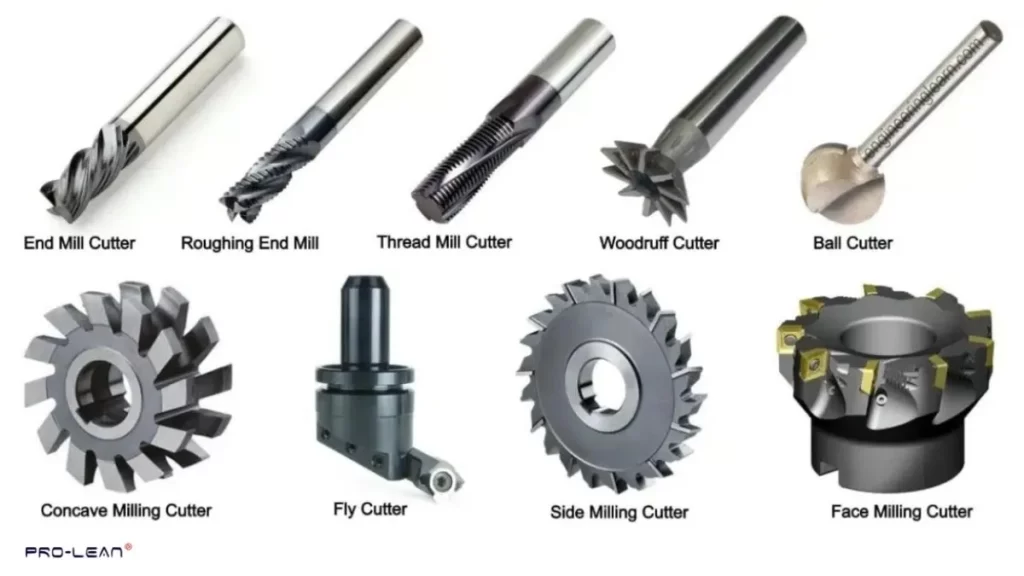
Different Types of Milling Cutters
Types of End Mills
End mills are cutting tools used in machining and come in various shapes for specific tasks. Here is a breakdown of some common end mill types:
- Roughing End Mills: These mills are used to quickly remove larger material so that the finish will be rough. Rough end mills, like aluminum and steel, are used for heavy metal work. It’s further used for molds and car parts before the final shaping.
- Ball End Mills: These types of balls have a round (like half a ball) tip. They are mainly used for curved shapes and smooth surfaces, e.g., molds, car parts, and for adding round edges.
- Square End Mills: These mills have a flat and square tip and are mainly used for making straight and square edges and flat bottoms, like for keyways and slots.
- Corner Rounding End Mills: These mills have round edges and are used to make the corner parts smooth and round, which can last longer.
- Dovetail End Mills: These mills have angled edges to cut special angled grooves, like strongly joining two pieces of metal together.
- Finishing End Mills: These mills are sharp and designed for smooth surfaces. These mills have more cutting edges and are used for parts that require a precise and smooth finish, e.g., medical devices and engine parts.
- V-bit End Mills: This type of end mill has a pointed V-shaped tip for engraving letters and designs, making angled edges, and cutting narrow lines.
How Face Mill Works?
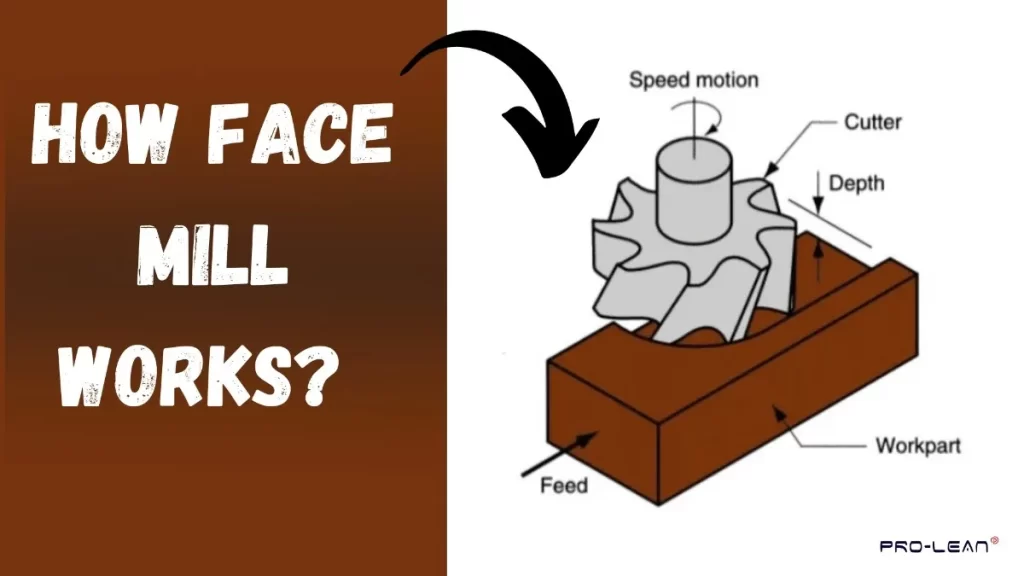
How Face Milling Works?
Face milling is a smart way to flatten surfaces on a material piece. It involves critically setting up the material and the cutting tool. Then let the machine remove material to create a flat, smooth shape.
If we talk briefly about working with this face mill, it all started with operating the machine and ensuring that the piece of material is held tightly. This stops it from moving while it’s being worked on, and then the person positions the cutting tool of the milling machine so it’s pointing straight down at the material’s top.
After that, they set how fast the cutting tool spins and how quickly the machine moves the material. Setting these speeds right is essential for a good time. After setting up everything, the machine starts cutting at the final stage. If it’s a CNC machine, it follows instructions to cut the exact shape needed on the material.
Try Prolean Now!
How Does an End Mill Work? 
End Mill Working
End mills are tools used to cut away material to shape things. They spin faster and move against the material, using sharp edges on their sides and bottom for proper and smooth cutting. These cutting tools do several tasks, including making outlines, cutting grooves, and shaping curved surfaces. A milling diagram can often illustrate the different types of cuts possible with end mills.
The actual working process of end mills starts with the thing you want to shape and then holds it tightly. After that, the end mill is put into the machine and spun rapidly. Then the machine moves either the spinning tool or the part being shaped. As the tool spins and moves, its sharp edges remove tiny pieces of the material, resulting in small bits called chips.
The person controlling the machine or a computer tells it how fast to spin, how fastly to move, and how to cut deeplydeep, so the smooth and accurate shape comes out just right.
While cutting happens, the machine or the movement of the tool helps get rid of the chips. The reason is that the end mills can cut in many ways, as they help make all sorts of shapes in factories.
You might be interested in how CNC Milling for Automotive Parts: Advantages & Applications.
What Are the Advantages of Face Milling?
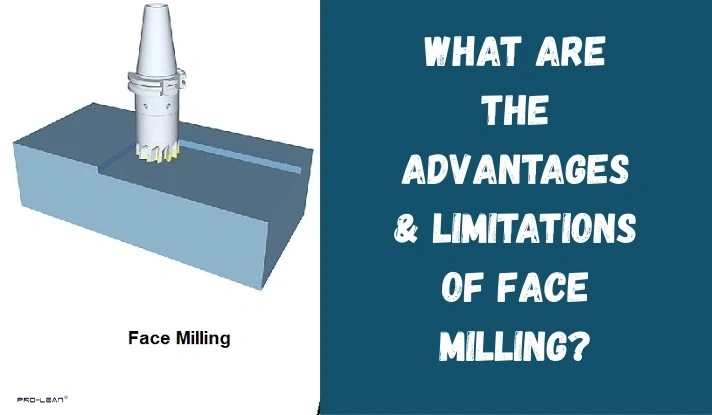
Face Milling Advantages and Limitations
Face milling offers efficient material removal and excellent surface flatness for various materials. Its key benefits contribute to faster production and high-quality finishes.
Here are the advantages of face milling:
- It quickly removes a lot of material.
- It helps create straight and right-angled sides on parts.
- You can use it on various materials like steel and aluminum.
- The tools can cut over a large area in a single pass, increasing speed.
- It achieves a smooth surface finish with less roughness.
- The tools can handle heavy cutting effectively.
- Multiple cutting teeth allow for faster operation, increasing productivity.
- It applies to appliesterials, including metals, plastics, and woods.
Limitations of Face Milling
Face milling helps create faces, but it has some limitations, too. Here are a few of them:
- It can be difficult to use challenging or confined areas, and may require a stable machine setup for accurate results.
- It’s hard to use in tight spots or on thin parts due to its larger cutter size.
- It can create noise and shaking compared to other ways of metal cutting.
- Larger cutters can sometimes use more power from the machine.
- The machine holding the workpiece and the cutter must be solid for optimal results.
Read more about: 3-Axis CNC Milling
What Are the Advantages of End Milling?

End Milling Advantages and Limitations
End mills are essential cutting tools for creating precise shapes and features in various industries. End milling offers versatility in shaping materials, from intricate designs to smooth surfaces.
Here are the advantages of end milling:
- It’s versatile, allowing you to cut outlines, make slots, and create complex shapes.
- It often results in a smooth finish, particularly on flat surfaces, thanks to accurate CNC guidance. Consider the Six Benefits of CNC Milling.
- You can use end mills on various material types by selecting the appropriate tool.
- They are excellent for making complex shapes and detailed outlines. CNC Milling for Small Batch Production is often a good choice for producing prototypes and smaller runs.
- With the proper selection, end mills can last long, reducing downtime and costs.
- Computer control (CNC machines) ensures the accurate and repeatable production of parts.
- Modern end milling techniques produce less vibration and noise, leading to smoother surfaces and longer tool life.
Limitations of End Milling
End mills are cutting tools that can do many things, but remove material more slowly than many tools. Here are some limitations of using end mills:
- Slower at removing larger materials quickly.
- Often, the same area needs to be cut more than once.
- It can sometimes break if too much force is used.
- It may not be the right choice for very large and flat surfaces.
What is the Difference Between a Shell End Mill and a Face Mill?
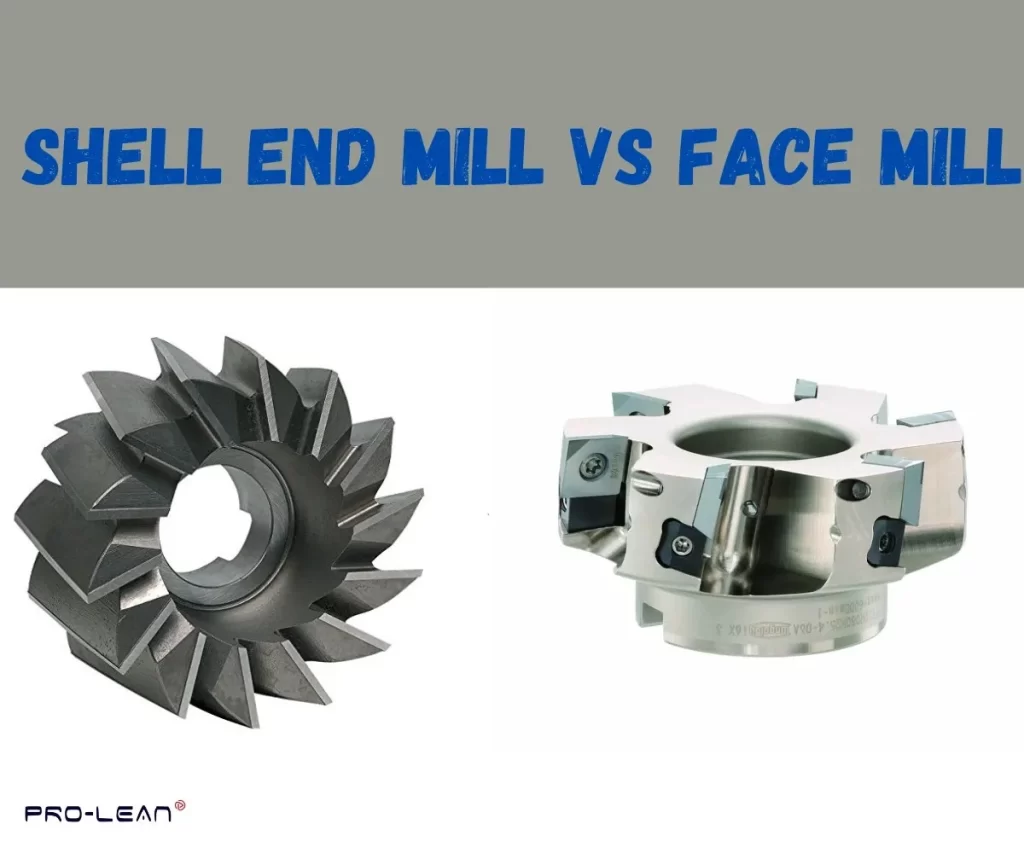
Shell End Mill vs. Face Mill
A shell end mill and a face mill are cutting tools used in machining to remove material. They are designed for different types of work depending on project needs. A shell end mill is used for cutting on both the end and the sides of a workpiece, whereas a face mill primarily creates flat surfaces.
If we consider a shell end mill, it can machine relatively large areas and cut along edges and flat surfaces. It typically looks like a short cylinder with cutting teeth on the bottom face and sometimes along the sides.
On the other hand, a face mill is specifically used to create smooth and flat large surfaces. Face mills are generally wider in diameter and have multiple cutting inserts on their face to cover a larger area efficiently. So, while both tools remove material, a shell end mill is more for general shaping, and a face mill excels at making surfaces flat.
For more complex work, explore Insight into 3-Axis, 4-Axis, and 5-Axis CNC Milling.
Try Prolean Now!
Factors to Consider When Choosing Between Face Mills and End Mills
When deciding whether to use a face mill or an end mill for a machining operation, several factors come into play:
Surface Finish Requirements: If the primary goal is to achieve a very flat and smooth surface over a large area, a face mill is generally the better choice.
Material Removal Rate: Face mills, with their multiple inserts and wider cutting diameter, can often remove material at a higher rate when creating flat surfaces.
Geometry of the Cut: For creating slots, pockets, contours, and intricate 3D shapes, an end mill is necessary due to its ability to cut with its sides and end.
Workpiece and Cutting Area Size: Face mills are well-suited for larger, flatter surfaces. End mills are more adaptable to various workpiece sizes and can access smaller or more confined areas.
Tooling Costs: Generally, the initial investment for a face mill and inserts might be higher than for a standard end mill. However, replaceable inserts can be more cost-effective in the long run for high-volume production.
Machine Rigidity and Power: Face milling often requires a more rigid setup and potentially more machine power due to the larger cutting forces involved.
Difference Between Shell End Mill and Face Mill
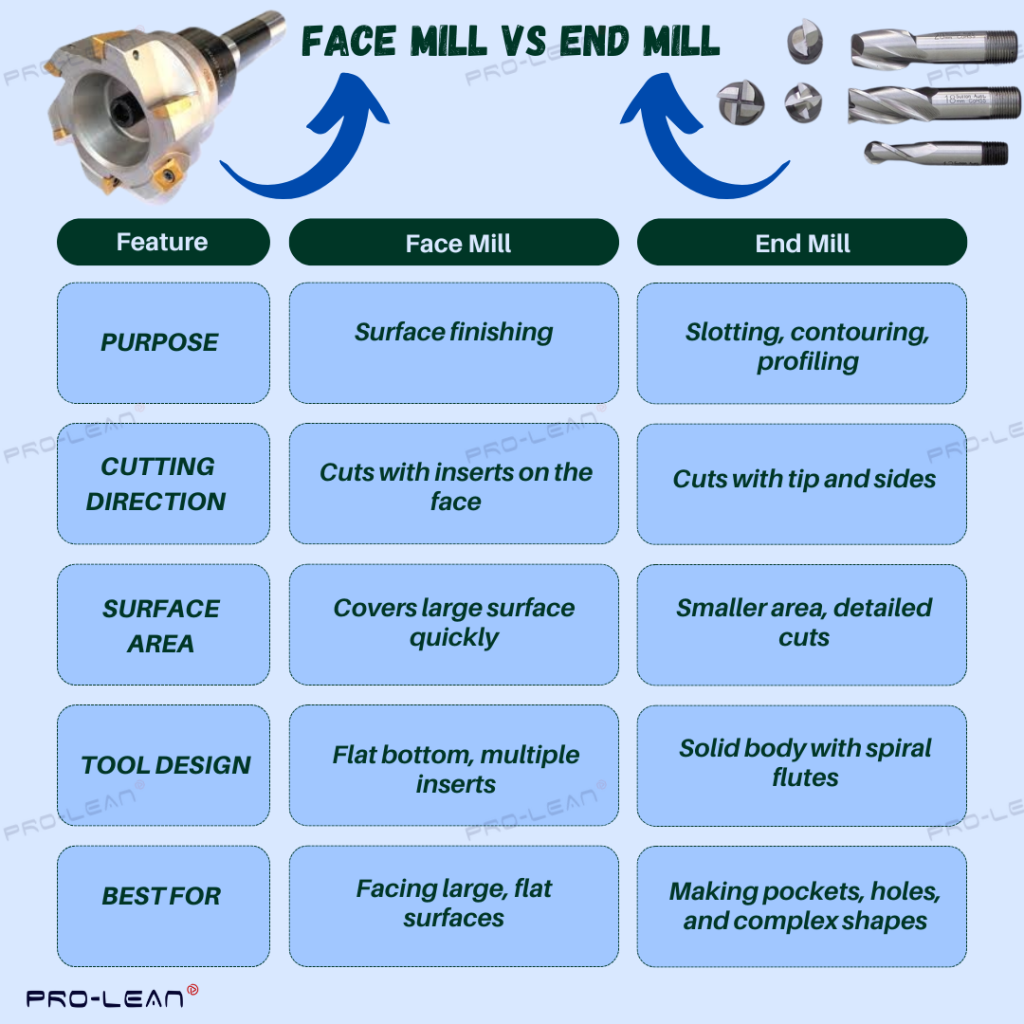
Face Mill vs. End Mill Comparison
While both shell end mills and face mills remove material, they cater to distinct machining needs. Understanding their key differences is essential to selecting the right tool for your application
| Feature | Shell End Mill | Face Mill |
| Primary Function | General shaping, cutting edges, and flat surfaces. | Creating smooth and flat large surfaces. |
| Cutting Action | Cuts with the bottom face and sometimes the sides. | Primarily cuts with multiple inserts on its face. |
| Typical Shape | Short cylinder with teeth on the bottom and sometimes sides. | Wider diameter body with multiple replaceable inserts on the face. |
| Area Coverage | Can machine relatively large areas and edges. | Efficiently covers larger flat areas. |
| Surface Finish | Suitable for general purposes; may not achieve the same flatness as a face mill. | Excels at producing very flat and smooth surfaces. |
| Material Removal | Good material removal capabilities. | Often, higher material removal rates are required for flat surfacing. |
ProleanTech – The Best Manufacturer to Go For! 
ProleanTech: Top Manufacturing Partner
We, at ProleanTech, are a leading CNC milling manufacturer, and can do face milling and end milling at our modern factory. We have advanced multi-axis CNC milling machines that allow us to perform face and end milling and all other sorts of milling, while also catering to specialized fields like CNC Milling for Aerospace: Precision and Perfection.
We can work with different materials for various uses, and our experts can also help you choose the proper milling process according to your project needs and requirements.
You can rely on us for all the milling services, from simple parts to producing large quantities. We’re ready to help you with your manufacturing needs. Get a Custom Pricing Estimate today!
Learn more about services: CNC Milling Service in China: Comprehensive Insights.
Wrap Up
Here we have come to an ending discussion between face mill and end mill-standard techniques, standarduding face mill used for smooth surfaces, while end milling is more suitable for manufacturing, slots, and complex shapes.
Choosing the right mill depends on the specific machining task. But are you still unsure about which one to choose? Then consider Proleantech to decide the right one according to your manufacturing needs, get a Fast & Free Quote now!!

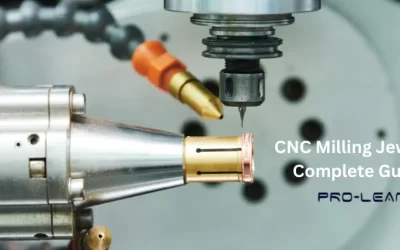
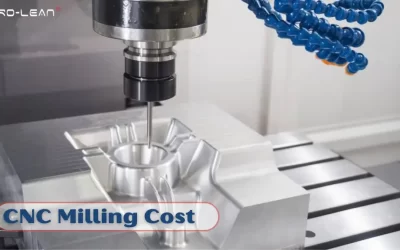
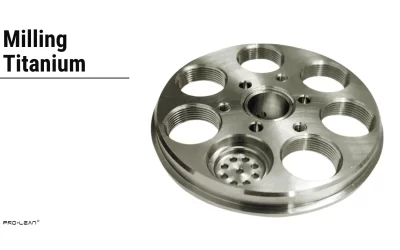
0 Comments